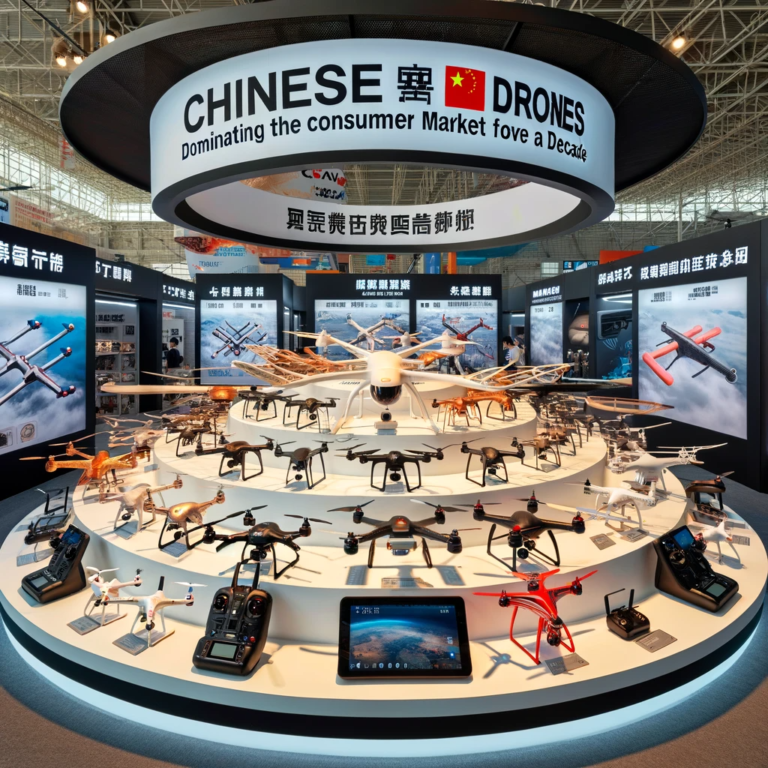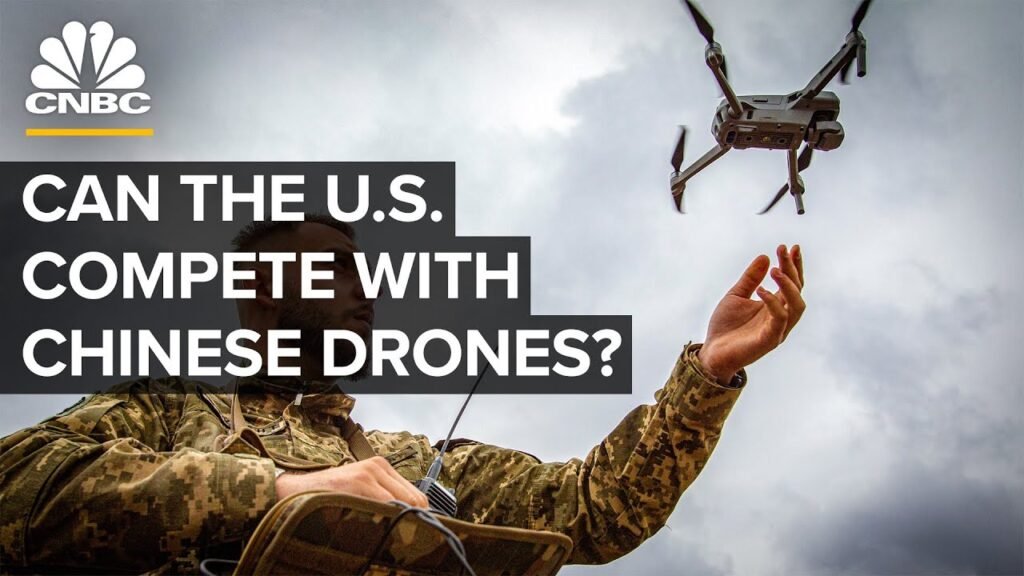
Chinese drones have dominated the consumer market for over a decade, raising concerns about US dependence on these products. DJI, a Chinese company, holds over 70% of the global drone market share, making it difficult for US-produced drones or those from trusted allies to compete on cost. Geopolitical concerns and the use of drones as weapons have prompted some US critics to call for alternatives to Chinese drones. However, Chinese drones are known for their affordability, reliability, and ease of use, making them appealing to consumers and professionals alike. The US government bans on DJI drones are impacting first responders and university researchers, and some states have even moved to ban their use over data concerns.
The future of the drone industry lies in autonomous drones for emergency response and defense, but the US currently lacks the necessary drone factories and supply chain components to scale up production. Developing more competitors in the drone defense space is crucial to avoid overwhelming dominance by a single company and ensure US national security. Banning DJI drones could harm the entire drone ecosystem, and audit reports show that their products are secure. However, dependence on Chinese components could have negative consequences if China cuts off the supply. Scaling up in the drone industry can lead to lower costs and leverage, making it essential for the US to explore ways to compete with Chinese drones effectively.
Chinese Drones: Dominating the Consumer Market for Over a Decade

This image is property of i.ytimg.com.
Introduction
Chinese-made drones have seen unprecedented success in the consumer market, dominating for over a decade. These drones have become an essential tool for various industries, from university researchers to first responders. However, growing geopolitical concerns and the weaponization of drones have raised questions about the United States’ dependence on Chinese drones and the need for alternative options.
DJI’s Dominance in the Global Drone Market
DJI, a Chinese company, has emerged as the leader in the global drone market, owning over 70% of the market share worldwide. Their drones are renowned for their affordability, reliability, and ease of use, making them popular among consumers across the globe. DJI’s commitment to innovation and their extensive range of well-made products has solidified their position as a dominant force in the industry.
US Government Bans on DJI Drones
As concerns over data security and espionage continue to grow, the US government has implemented bans on the use of DJI drones. These bans have had a significant impact on various sectors, including first responders and university researchers who heavily rely on drones for scientific research and emergency response. Critics argue that affordable US-produced drones or drones produced by trusted allies need to enter the market to compete with Chinese drones effectively.
The Affordability and Reliability of Chinese Drones
One of the key factors contributing to the success of Chinese drones is their affordability and reliability. Chinese drones offer a wide range of features at competitive prices compared to their US-produced counterparts. Contrary to misconceptions, Chinese drones have proven to be highly reliable, providing users with long-term performance and excellent support through DJI Care. Their reputation for delivering high-quality products at reasonable prices has given them a significant advantage in the consumer market.
Chinese Export Restrictions on Drones
To address concerns over drone usage in combat situations, China’s Ministry of Commerce has implemented export restrictions on certain drones, such as those with long flight times or specific sensors. These restrictions limit the sale of certain drone models, making them exclusively available to enterprise customers. While these restrictions aim to prevent drones from being used in combat, they have an impact on the availability of these products in the consumer market.
State and Federal Bans on DJI Drones
Several states in the US have taken steps to ban the use of DJI drones by state agencies, including police departments and fire departments, citing data concerns. Additionally, there is a proposal for a federal ban that would restrict federal agencies from using Chinese-produced drones. These bans are a response to concerns about data security and potential vulnerabilities in the supply chain. However, critics argue that these concerns may be overblown, as DJI has undergone security evaluations and audits with no identified threats.
Challenges for US Companies in Competing with Chinese Drones
US companies face significant challenges in competing with Chinese drones, primarily due to higher production costs in the US. Material and labor costs, among other factors, make producing drones in America more expensive compared to China. To overcome this challenge, US companies need to offer unique value propositions, such as advanced AI capabilities, and focus on specific market segments like law enforcement and government organizations.
US Companies Targeting Law Enforcement and Government Organizations
US-based companies are actively developing drones specifically designed for law enforcement and government organizations. These drones cater to the unique needs of these sectors, ranging from surveillance and search and rescue to monitoring protests and ensuring public safety. By targeting these niche market segments, US companies aim to provide alternatives to Chinese drones and address concerns over data security.
The Significance of Small Drones in Modern Warfare
The use of small drones in modern warfare has proven to be invaluable. The ongoing conflict in Ukraine has highlighted the importance of cheap and reliable drones for various combat roles. These drones, often consumer-grade quadcopters, offer tactical advantages and are easily replaceable, unlike larger and more expensive military-grade drones. As a result, small drones have become essential tools for intelligence, surveillance, reconnaissance, and targeting in modern conflicts.
US Department of Defense Initiative for Small Drones
Recognizing the significance of small drones in modern warfare, the US Department of Defense has announced an initiative to field thousands of small drones. The initiative aims to leverage the capabilities of small drones for disaster relief, civilian operations, and other military applications. By investing in and developing small drones, the US government seeks to enhance its capabilities and maintain a competitive edge in modern warfare.
Lack of Drone Factories and Supply Chain Components in the US
One of the challenges facing the US drone industry is the lack of drone factories and supply chain components within the country. China’s role as a major producer of drones, along with its well-established supply chains, gives Chinese companies a significant advantage in terms of cost and availability. To compete effectively, the US drone industry needs to develop its manufacturing capabilities and establish a robust supply chain within the country.
Defending Against Small Drone Threats
As drones continue to play a crucial role in conflicts and national security, the need to defend against small drone threats becomes paramount. Companies like Fortem Technologies are developing sensors and drone hunters to counter the potential threats posed by small drones. By investing in technologies that can detect and neutralize small drones, the US aims to enhance its ability to protect critical infrastructure and prevent potential attacks.
Drones in Modern Conflict and National Security
The increasing use of drones in various conflict scenarios raises concerns about national security. Drones have become indispensable tools for both state and non-state actors, ranging from lone terrorists to full-scale military operations. Drones provide advantages in terms of intelligence gathering, surveillance, and targeting, making them a critical aspect of modern conflict and national security strategies.
The Importance of Developing Competitors in the Drone Defense Space
To ensure a healthy and competitive drone industry, it is crucial to develop more competitors in the drone defense space. Depending solely on a single company, such as DJI, for the majority of drone production and supply poses risks in terms of market dominance and potential vulnerabilities. By fostering the development of alternative companies and competition, the drone industry can thrive and address concerns over dependence on a single source.
The Future of the Drone Industry
The future of the drone industry lies in the continued development of autonomous drones for various applications, including emergency response and defense. Advancements in AI and automation will play a significant role in shaping the capabilities and potential uses of drones. As the technology evolves, it is crucial for the drone industry to adapt quickly and continue innovating to meet the growing demands of consumers, industries, and national security.
Concerns about Banning DJI Drones
While there are legitimate concerns about data security and dependence on Chinese drones, there are also concerns about banning DJI drones altogether. Banning DJI drones would have a significant impact on the entire drone ecosystem, affecting industries, government agencies, and consumers who have already invested in DJI products. Additionally, audit reports have indicated that DJI products have undergone thorough evaluations, suggesting that some concerns may be unfounded.
Dependence on Chinese Components
Another concern related to Chinese drones is the dependence on Chinese components. Should China decide to cut off the supply of these components, it could have negative consequences for the drone industry, including limitations on the availability of drones for law enforcement, military, and civilian use. To mitigate this risk, developing domestic manufacturing capabilities and securing alternative sources of components becomes crucial.
Scaling up in the Drone Industry
One of the challenges facing the US drone industry is scaling up production to compete with Chinese manufacturers effectively. Higher production costs and limited manufacturing capabilities hinder the ability of US-based companies to achieve economies of scale and competitive pricing. To address this, the industry needs to invest in expanding manufacturing capabilities, fostering research and development, and collaborating with trusted allies to create a robust and competitive drone industry.
In conclusion, Chinese drones have enjoyed immense success in the consumer market for over a decade. However, geopolitical concerns and the use of drones as weapons have raised questions about the US dependence on Chinese drones. While DJI dominates the global drone market, bans on its products by the US government have impacted various sectors. Developing affordable and reliable US-produced drones, fostering competition, and addressing concerns about data security are crucial steps towards successfully competing with Chinese drones. The future of the drone industry lies in continued innovation, the development of autonomous drones, and building a robust and scalable drone ecosystem within the US.